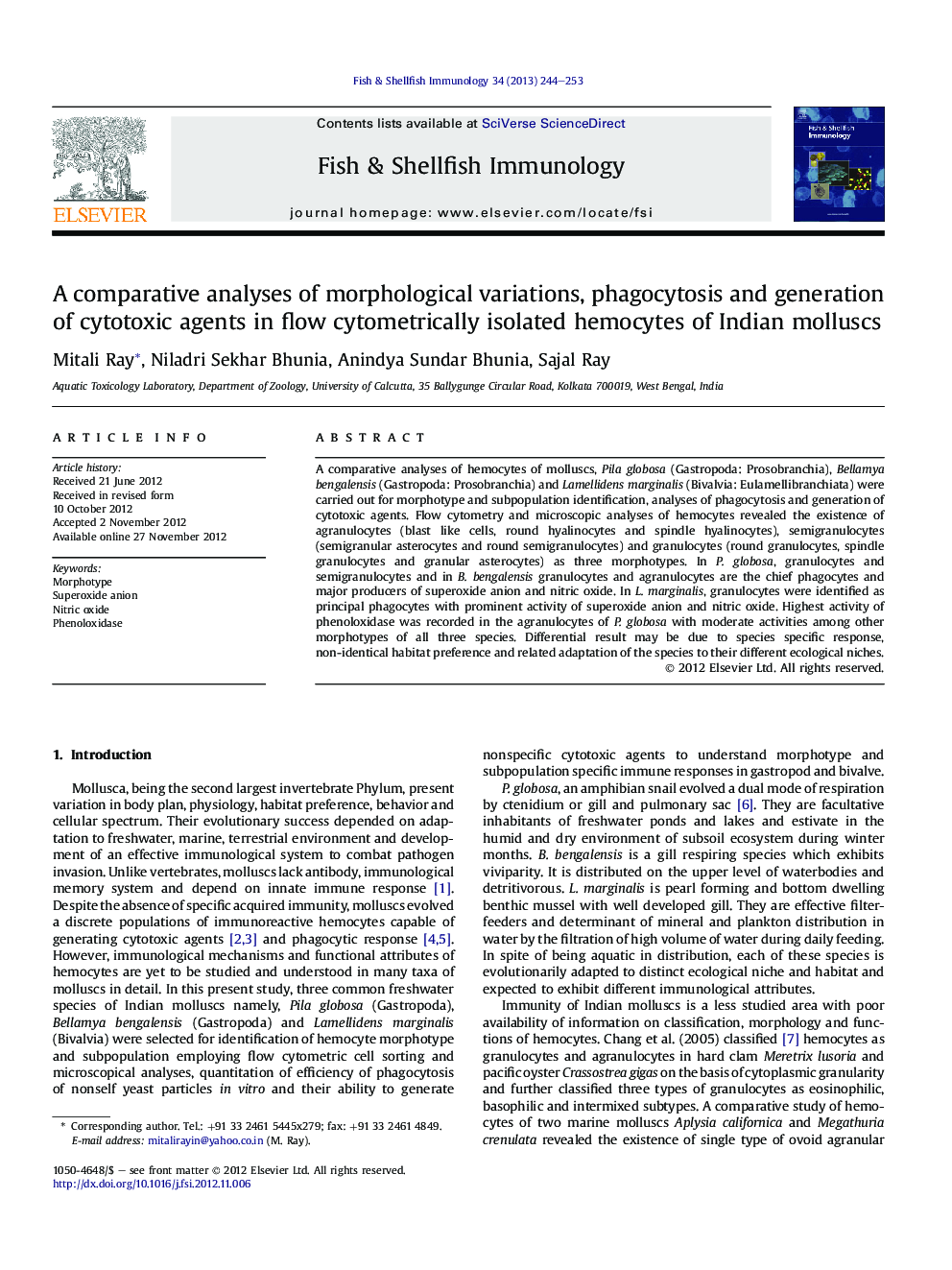| Article ID | Journal | Published Year | Pages | File Type |
|---|---|---|---|---|
| 2432280 | Fish & Shellfish Immunology | 2013 | 10 Pages |
A comparative analyses of hemocytes of molluscs, Pila globosa (Gastropoda: Prosobranchia), Bellamya bengalensis (Gastropoda: Prosobranchia) and Lamellidens marginalis (Bivalvia: Eulamellibranchiata) were carried out for morphotype and subpopulation identification, analyses of phagocytosis and generation of cytotoxic agents. Flow cytometry and microscopic analyses of hemocytes revealed the existence of agranulocytes (blast like cells, round hyalinocytes and spindle hyalinocytes), semigranulocytes (semigranular asterocytes and round semigranulocytes) and granulocytes (round granulocytes, spindle granulocytes and granular asterocytes) as three morphotypes. In P. globosa, granulocytes and semigranulocytes and in B. bengalensis granulocytes and agranulocytes are the chief phagocytes and major producers of superoxide anion and nitric oxide. In L. marginalis, granulocytes were identified as principal phagocytes with prominent activity of superoxide anion and nitric oxide. Highest activity of phenoloxidase was recorded in the agranulocytes of P. globosa with moderate activities among other morphotypes of all three species. Differential result may be due to species specific response, non-identical habitat preference and related adaptation of the species to their different ecological niches.
► Agranulocytes, semigranulocytes and granulocytes are hemocyte morphotypes with eight subpopulations. ► Granulocytes (P4) are the chief phagocytes and main producers of O2−. ► NO and PO are agranulocytic (P2) in origin in three species. ► O2− in Bellamya bengalensis and NO in Pila globosa and Lamellidens marginalis are major cytotoxic agents. ► PO is prevalent in B. bengalensis and L. marginalis as cytotoxic agent.
